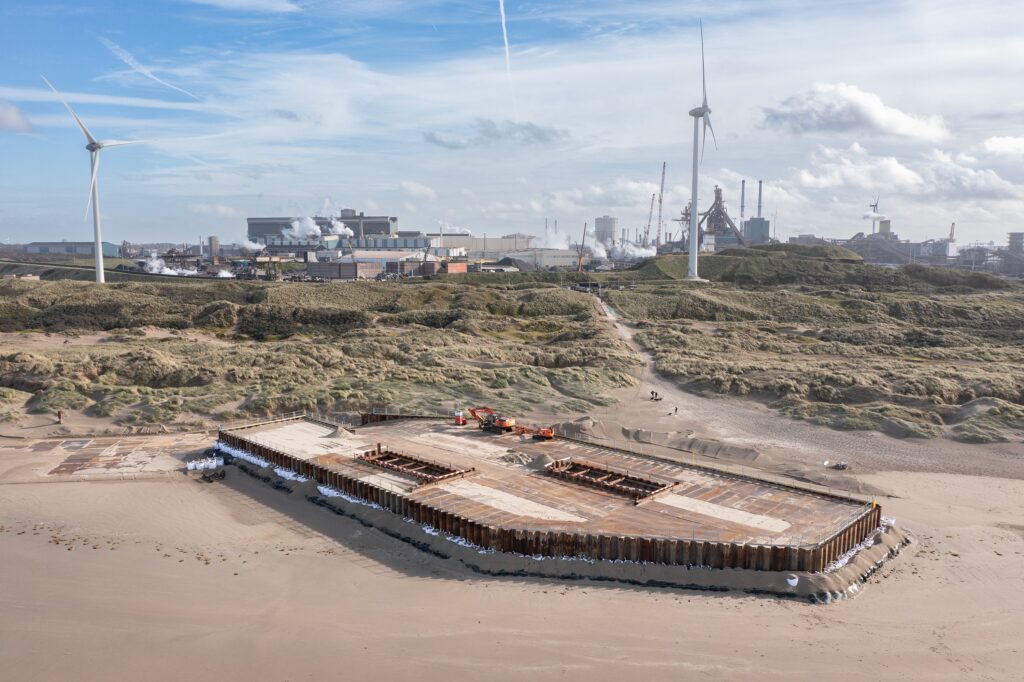General – Landfall Works
After the first drillings towards the Tata Steel site in Velsen, contractor NRG turned the electric drilling machine in sculpture park ‘Een Zee van Staal’ 180 degrees for the drilling under the dunes.

An electric drill has also been placed on the ‘sand castle’ on Velsen beach.
In the coming weeks, both machines will drill towards each other at a depth of about 30 meters for the connection of the Hollandse Kust offshore wind farm (west Beta).
In recent months, NRG has built a temporarily elevated working area on the beach of Velsen for the two drillings under the dunes.
“With this ‘sand castle’ we eliminate the height difference on either side of the dunes,” says project leader Johannes Becker. “This way we prevent the drilling fluid, which we use to keep the boreholes open, from running out again at the lowest point. After we have drilled a hole, we pull an empty plastic casing pipe into the hole where TenneT’s electricity cables will soon be laid.”
TenneT will install a ‘socket at sea’ next year 50 kilometers off the coast of Egmond aan Zee. The wind turbines that energy company RWE will have built at sea in 2025 will then be connected.
To bring that power ashore at Velsen in 2026, contractor NBOS (combination Boskalis + Orient Cable) will install two electricity cables in the seabed next year. Behind the dunes, these sea cables are connected underground with ‘large crown stones’ in so-called socket pits to the cables on land.
Contractor NRG is making six boreholes for the connection of ‘west Beta’. Two under the dunes and four on land for the electricity cables that bring the power to the transformer station in Wijk aan Zee.

From the transformer station, TenneT has had the cables for ‘west Beta’ laid at the same time as those for ‘north’ and ‘west Alpha’ in 2021/2022, up to a high-voltage substation. From here TenneT will eventually feed the power into the national electricity grid, making the power available to households, companies and industry.
NRG uses the intersect method for drilling under the dunes. Becker: “To do this, we drill from the beach and the work site towards each other in a GPS-controlled manner. The drill heads will therefore meet each other halfway at a depth of about thirty meters in the seabed. The advantage of an intersect drilling is that you keep the fluid pressure in the borehole as low as possible.”
